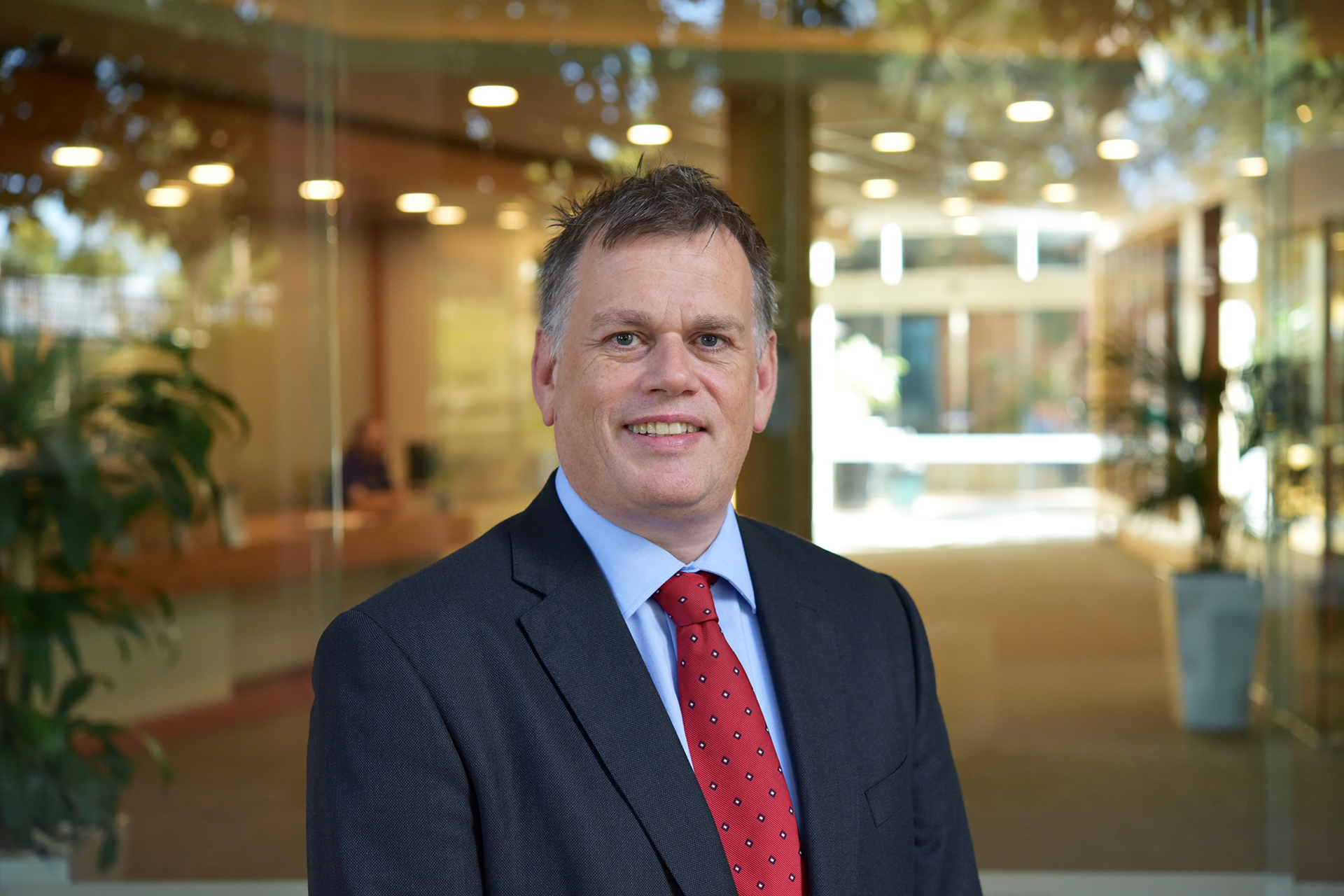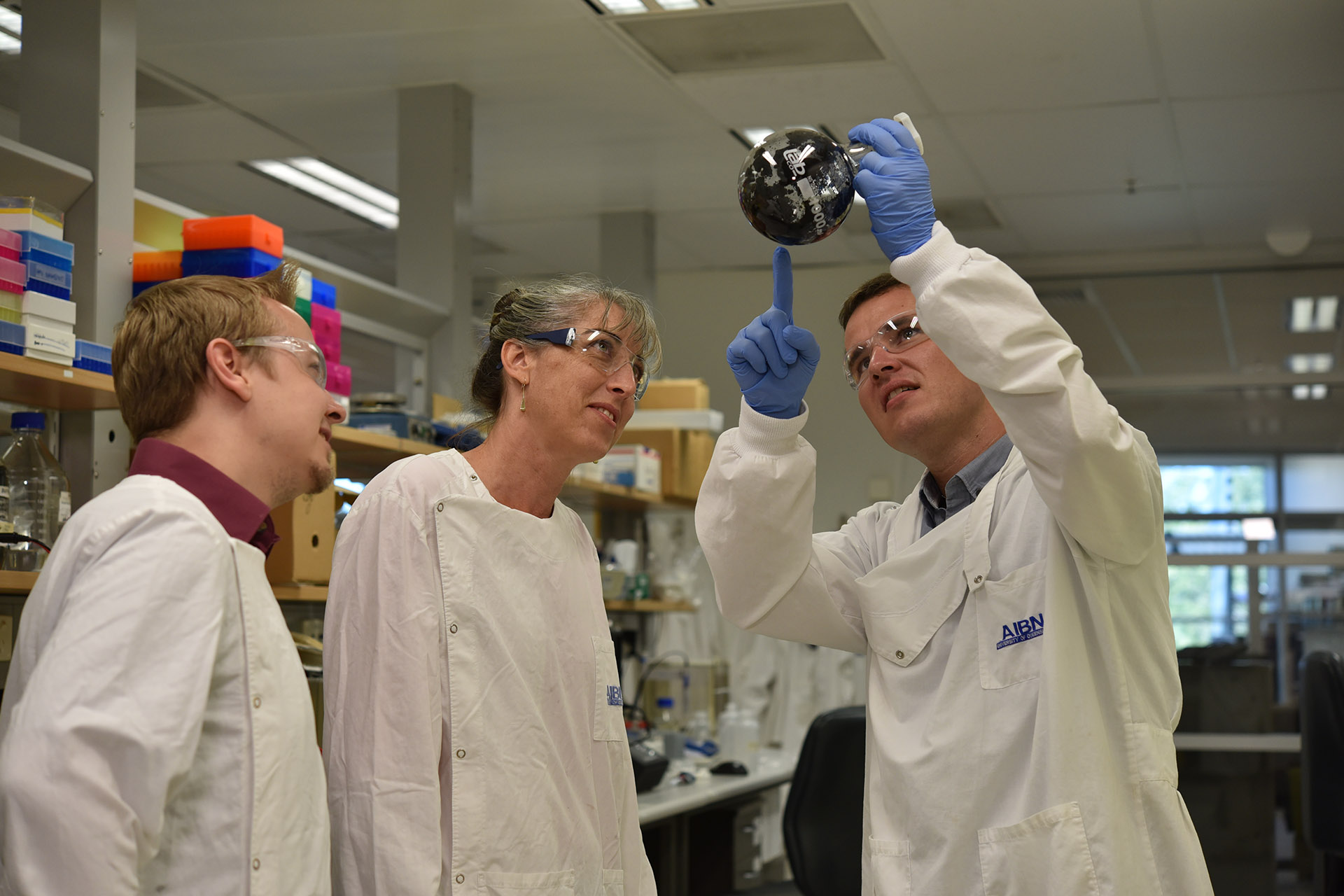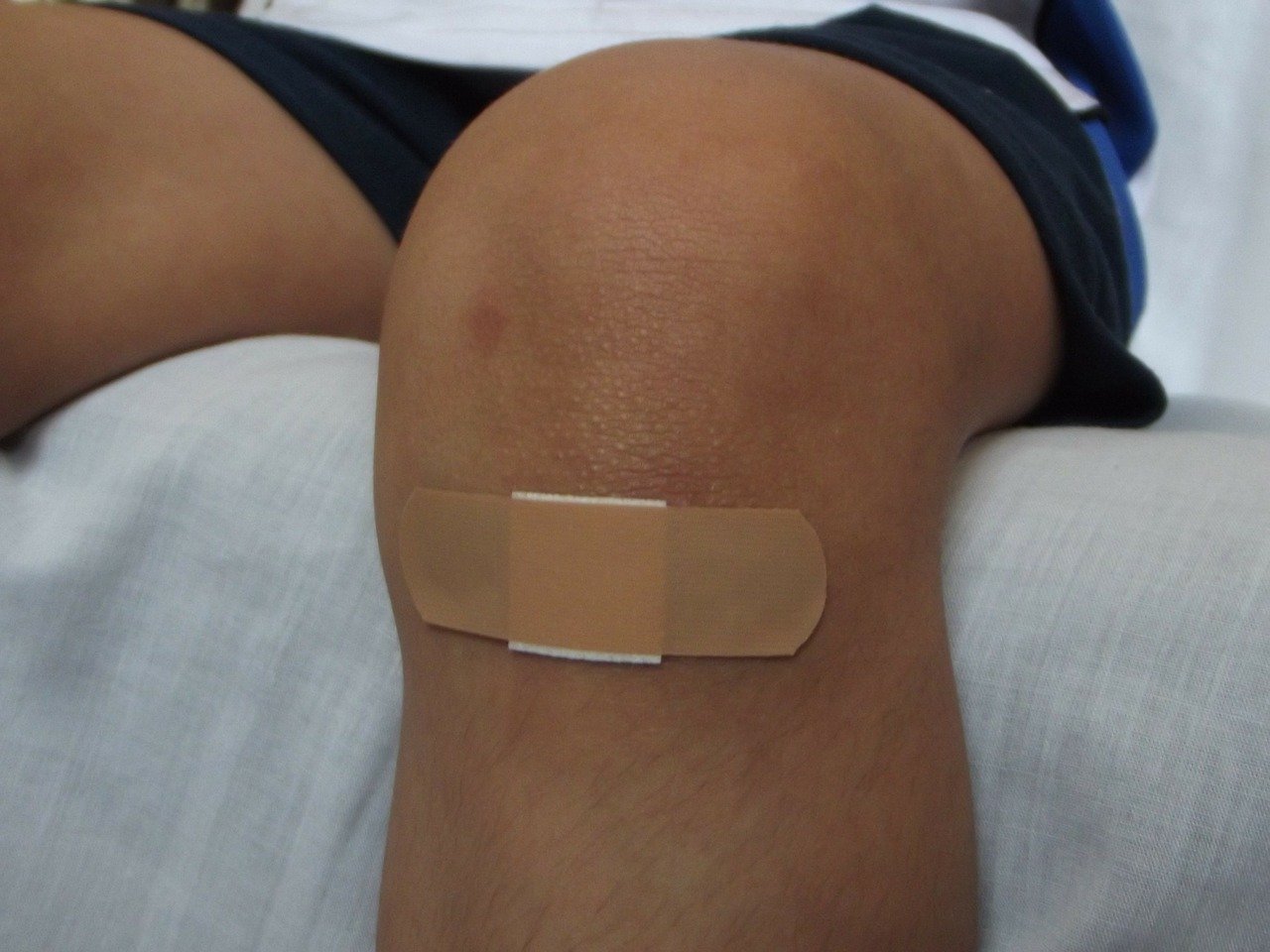A eureka moment for biomimetics
Some of the most groundbreaking scientific discoveries are from research into seemingly unrelated projects. For instance, saccharin was discovered during investigations into coal tar, while the first patented microwave had its roots in radar research.
New Academy Fellow Professor Alan Rowan’s research team was developing counterfeit-proof banknotes when they discovered a whole new family of materials. In the process of developing a polymer dissolvable in water, the team discovered a unique biomimetic material. “It was by accident,” says Rowan, who is the Director of the Australian Institute for Bioengineering and Nanotechnology and Professor of Chemistry at the University of Queensland. The material is now being developed as a wound dressing, drug therapeutic and aid in cell growth.
The material that Rowan’s team discovered is called a polyisocyanopeptide (PIC) hydrogel and has some highly unusual properties. Like other hydrogels, it consists of a 3D network of hydrophilic (water-attracting) polymers. It can hold a truly massive amount of water while retaining its gel structure: one kilogram would gelate an entire swimming pool’s worth of water.
It took the team about five years to understand the properties of the hydrogel, which stiffens with the application of force. It all comes down to the specific dynamic mechanical property of the hydrogel, known as stress stiffening. “The best analogy is a seatbelt in your car,” says Rowan. “If you pull a seatbelt, it will stiffen up.” This kind of mechanical responsiveness is essential to all biological systems, including the cells and extracellular networks in our own bodies.

Copying nature to control cells
Rowan’s research bridges the interface between nanotechnology, biology and supramolecular chemistry, which examines the forces between molecules. Many synthetic supramolecular systems are designed to copy biological systems to learn more about their functions. Rowan’s group is particularly interested in understanding the extracellular matrix, the non-cellular component present in all tissues and organs.
Made up of water, proteins and polysaccharides (sugars), the extracellular matrix acts as a backbone for cells, as well as playing a fundamental role in cell behaviour and survival. Consider our largest organ, skin. The skin’s extracellular matrix is a fibrous, jelly-like network that has a major role in injury responses, including wound healing and scarring.
The PIC hydrogel Rowan’s team developed is a new class of water-soluble polymer that can mimic the extracellular matrix around cells like no other synthetic system. It’s described as biomimetic, because it essentially mimics natural processes in human tissue and is capable of communicating with the cells in the body.

“Mother nature has been building life for billions of years and trying to understand how it does that enables us to make new materials and catalysts,” says Rowan. These next-generation materials could be used to enhance chemical reactions for a myriad of applications, including solar cells and nanomachines for advanced computing.
The development of the synthetic extracellular matrix is also the first step to truly controlling cell behaviour. “If we can understand how cells work, we can prevent different things,” says Rowan. For instance, “if we understand the mechanism of the extracellular matrix which causes scarring, we can prevent that”. Another area of interest is bone loss due to osteoporosis. “We have some extremely exciting results there, which I think will change therapies for bone loss.”

Engineering organs, and more
The hydrogel itself has received widespread attention worldwide because “it can be used for anything”, says Rowan. Potential applications include gel-infused sports bras, prosthetic limbs, cosmetics, drug delivery systems and banknotes (as per the original plan).
The material shows particular promise in biomedicine. Hydrogels are already widely used in tissue engineering, which aims to replace, repair or regenerate tissues and organ functions. Rowan’s team is progressing work to grow ‘organoids’, simplified versions of organs, within the synthetic PIC hydrogels. The aim is to create more sophisticated models for testing drugs, with the hope of reducing animal-based testing.
The PIC hydrogels have highly tuneable properties that can be tailored to meet the demands of different cells. The researchers have already demonstrated that the hydrogel allows single cells to develop into stomach and mammary gland organoids. Further work is ongoing to fine-tune organoid production and even grow brain organoids.
When it comes to unravelling scientific problems, Rowan is motivated by curiosity and the search for “that eureka moment, when we actually start to understand something … and if it can help people, that’s a real bonus”.





